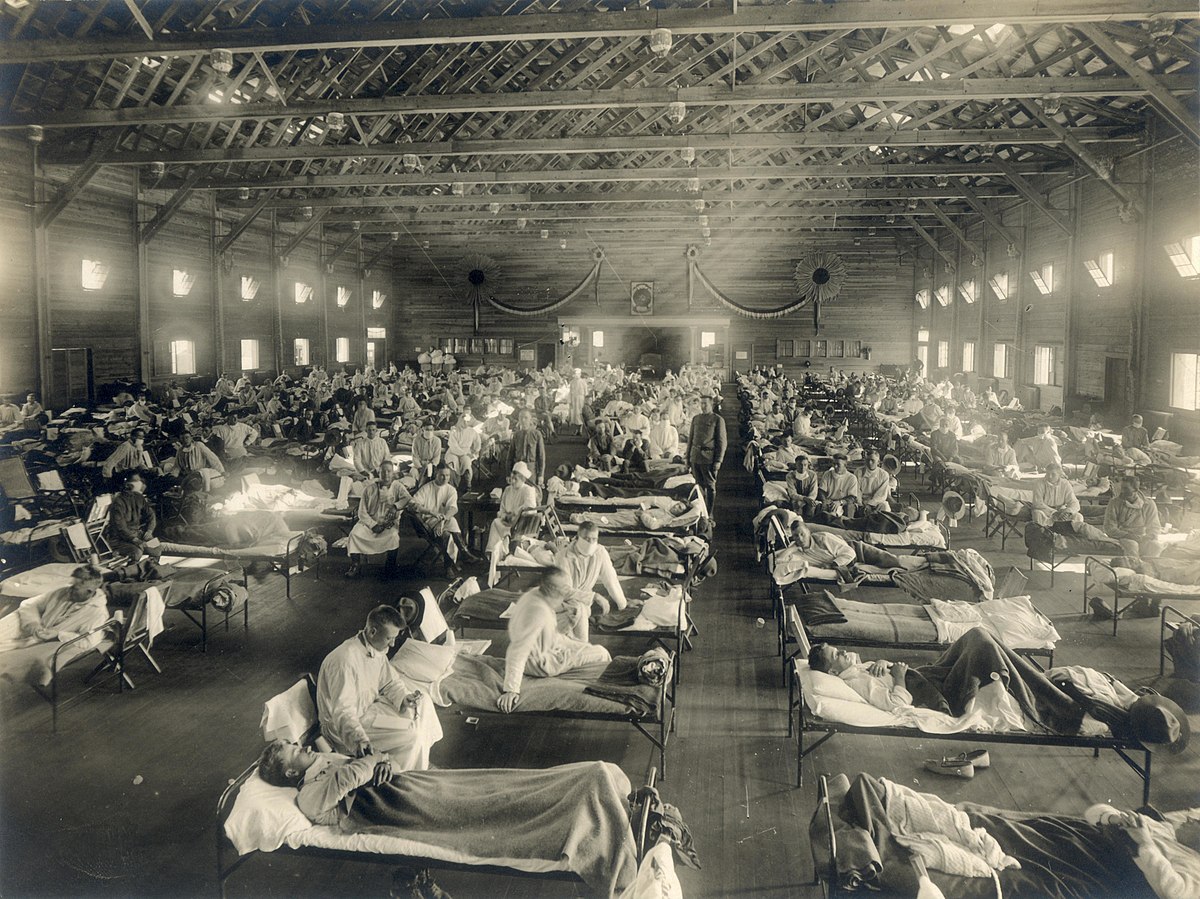14 July 2020
Winston Churchill and the Spanish Flu
Posted by Shane Hanlon
This is part of a student blog series as part of the University of Pittsburgh’s Disease Ecology Class that our own Shane M Hanlon is currently teaching. Find out more about the series and read all the posts here!
By Mardelyn Martinez

Victims of the Spanish Flu. Credit: Wikipedia
Winston Churchill is notable one of the most influential people to ever live being recognized for many public policies that he had implemented in England during his time serving in parliament. What is not talked about to a great detail is how he attempted to establish many policies dealing with certain wildlife diseases such as the Spanish flu. In the poem he goes on the introduced the airborne disease as “from China’s bright celestial land, to Arabia’s thirsty sand, it journeyed with the sun”. Churchill doesn’t actually state the disease right away, but instead he grabs the audiences’ attention by making the disease seem like a fairy tale and a mysterious being that is everywhere and nowhere at the same time. Churchill then goes on the mention the disease coming like death waiting at everyone’s door increasing the number of followers that it had on a daily basis. This can be translated as when the Spanish flu began to travel from different countries at a rapid pace, that when it ultimately reached England the death toll increased at exponential numbers since there was no cure. He begins to explain how the disease attacked Ural, Moscow, Alsace, and Lorraine thus making all of Europe groan out loud seeing the “germs of an illness wend their way” this could be described as how there was an actual depiction of how the disease destroyed lives and businesses when it took place and how the world could do nothing but watch the disease rip apart the nation since there was no cure invented at the time being. The poem comes to a conclusion with Churchill speaking on how the disease attempted to destroy the nation but that the will of god and its citizens were stronger than the disease in hopes of never combating another disease like that again. While the message behind the speech could be said to be place d after the Spanish flu struck, we can see that the majority of individuals used this speech as a message of hope for the future since they probably lost everything to when the virus struck that now is probably the time or era of rebuilding the nation.
Sources: The Influenza, 1890


 The Plainspoken Scientist is the science communication blog of AGU’s Sharing Science program. With this blog, we wish to showcase creative and effective science communication via multiple mediums and modes.
The Plainspoken Scientist is the science communication blog of AGU’s Sharing Science program. With this blog, we wish to showcase creative and effective science communication via multiple mediums and modes.